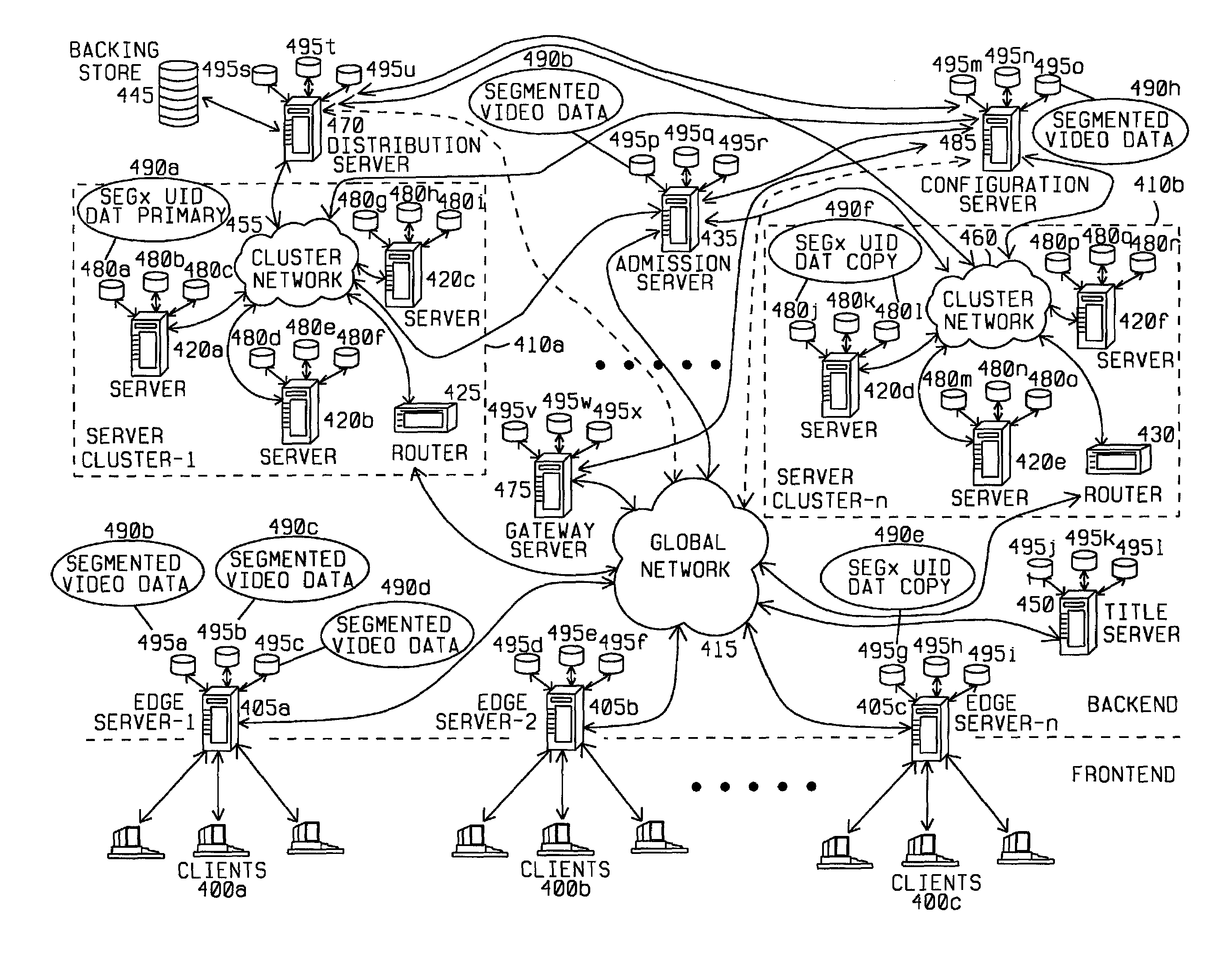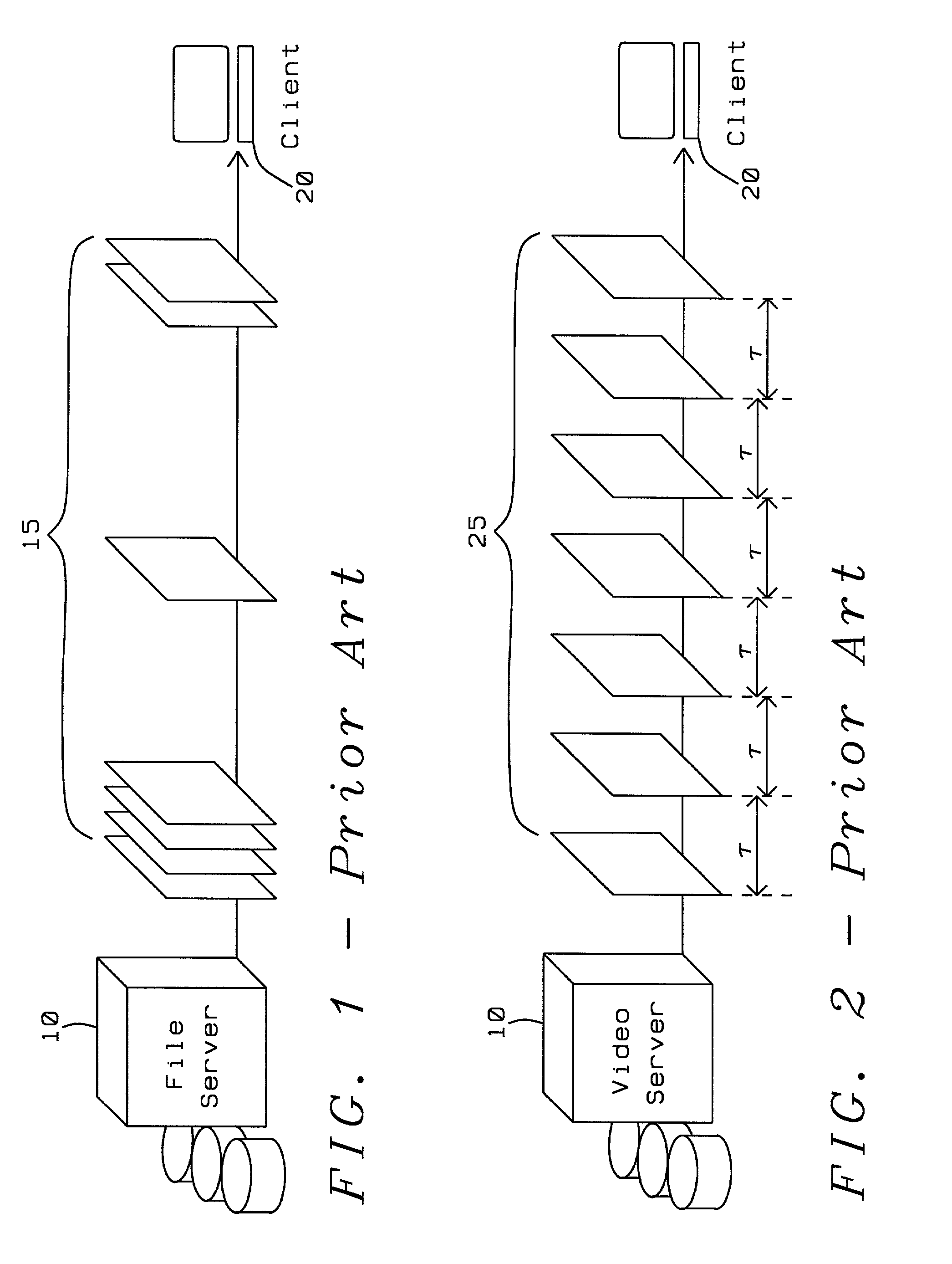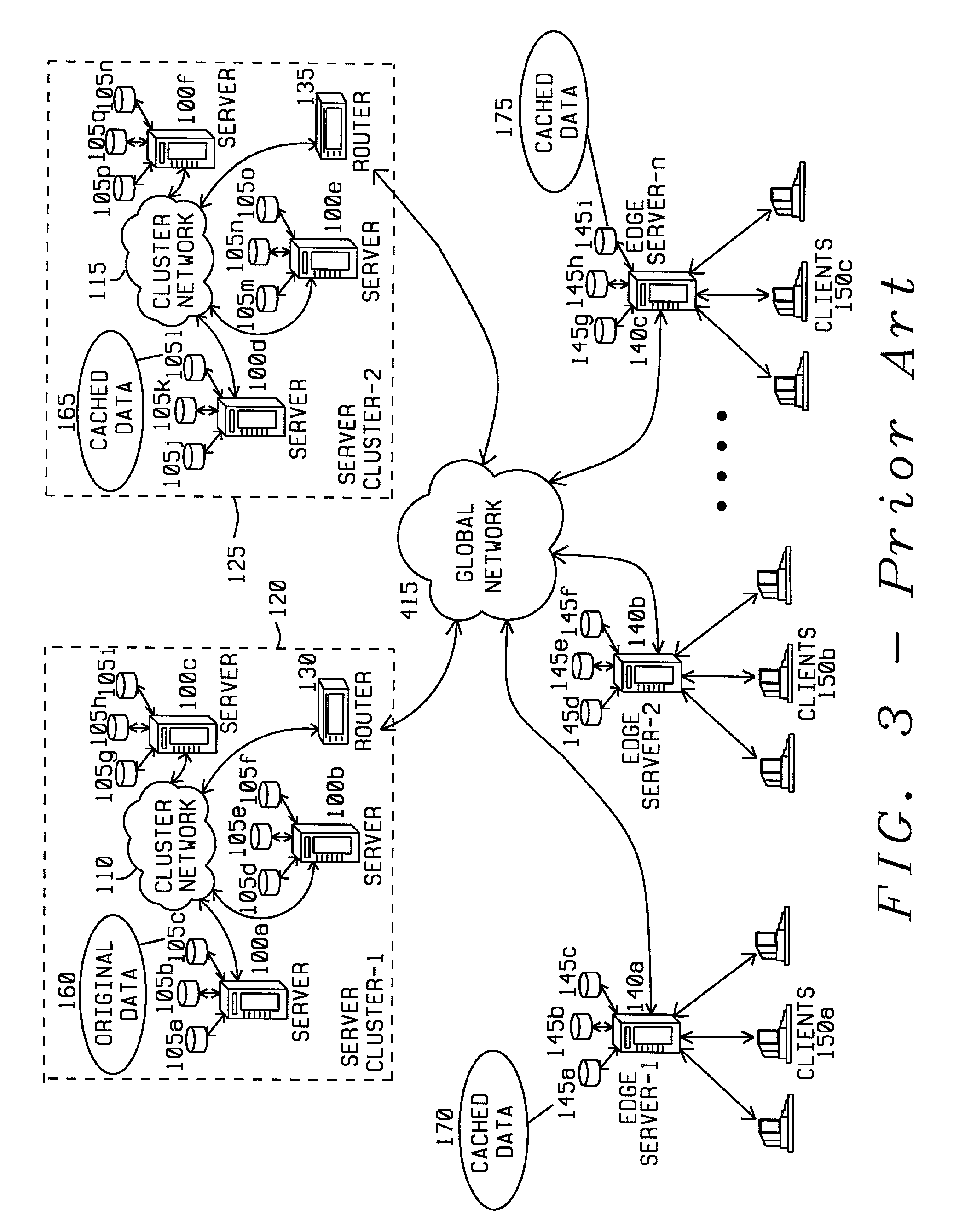Video distribution system using disk load balancing by file copying
a video distribution system and file copying technology, applied in the field of broadcasting quality video data, can solve the problems of imposing a large latency before a viewer, occupying huge amounts of computer space, and conventional file servers not meeting video's unique requirements, etc., to achieve optimized load balancing, reduce disk and ram costs, and reduce the effect of response tim
- Summary
- Abstract
- Description
- Claims
- Application Information
AI Technical Summary
Benefits of technology
Problems solved by technology
Method used
Image
Examples
Embodiment Construction
[0072]Refer now to FIG. 4 for a description of a video distribution system of this invention. The client computing systems 400a, 400b, 400c are connected through a communications link to an edge server 405a, 405b, and 405c. Each edge server 405a, 405b, 405c acts as an interface for the client computing systems 400a, 400b, 400c to a global communications network 415. The edge servers 405a, 405b, 405c are at the boundary between the “front-end” and the “backend” of the video distribution system. The front-end being the client computing systems 400a, 400b, 400c that are the terminal points whereby the users can access the video distribution system. Further the edge servers 405a, 405b, 405c are generally Internet service providers to which the client computing systems 400a, 400b, 400c are in communication.
[0073]The backend of the video distribution system has server systems 420a, . . . , 420f that are grouped together to form server clusters 410a, . . . , 410b. The server systems 420a, ...
PUM
 Login to View More
Login to View More Abstract
Description
Claims
Application Information
 Login to View More
Login to View More - R&D
- Intellectual Property
- Life Sciences
- Materials
- Tech Scout
- Unparalleled Data Quality
- Higher Quality Content
- 60% Fewer Hallucinations
Browse by: Latest US Patents, China's latest patents, Technical Efficacy Thesaurus, Application Domain, Technology Topic, Popular Technical Reports.
© 2025 PatSnap. All rights reserved.Legal|Privacy policy|Modern Slavery Act Transparency Statement|Sitemap|About US| Contact US: help@patsnap.com



